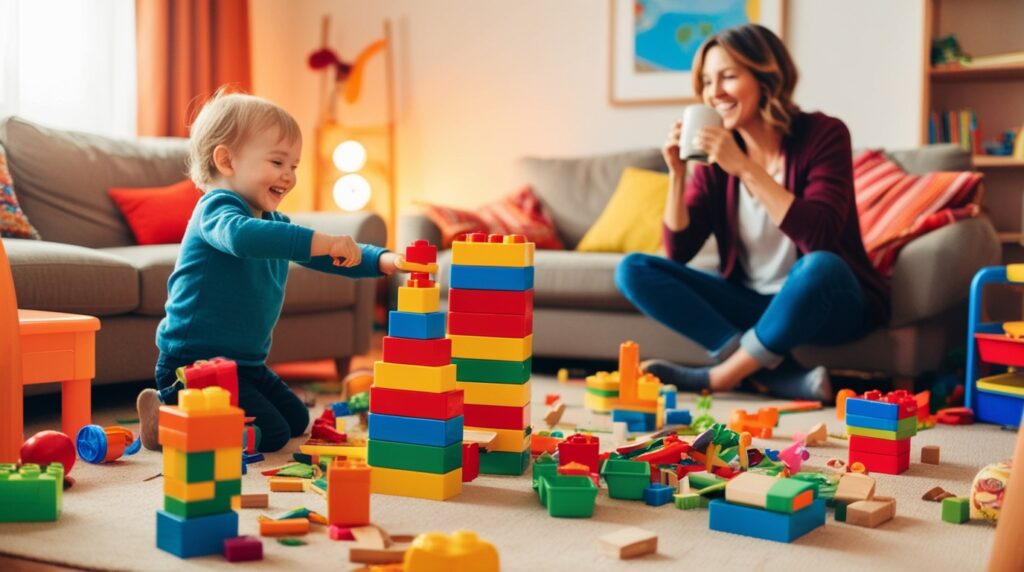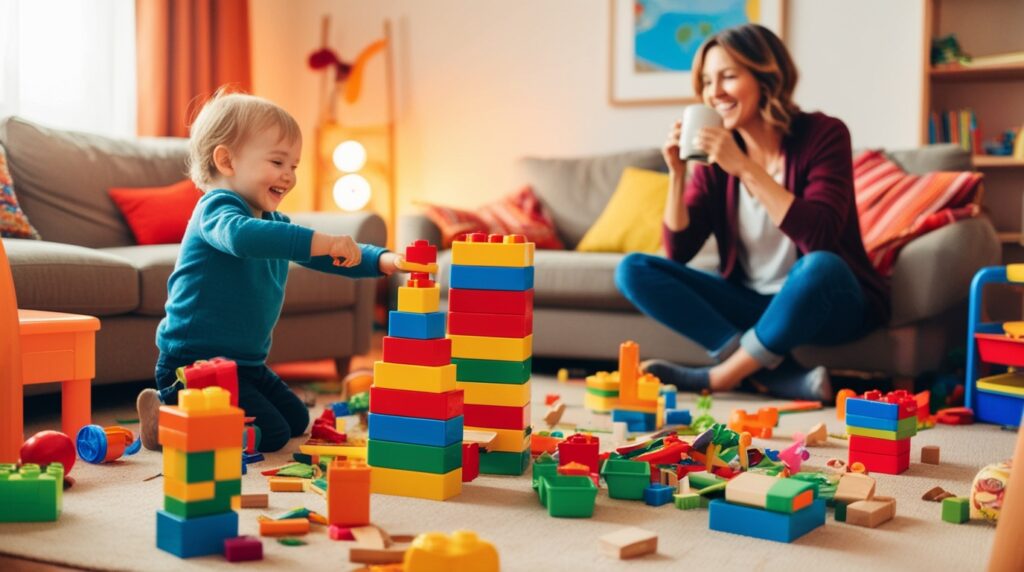
Introduction: Why This Matters (and Why You’re Not Crazy)
Picture this: You’ve just spent 20 minutes tidying up the living room. The toys are put away, the cushions are fluffed, and for one glorious moment, your home looks like it belongs to actual adults. Then, your toddler walks in. Within seconds, it’s as if a tiny tornado has swept through, leaving a trail of LEGO bricks, crayons, and snack crumbs in its wake. Sound familiar?
If you’ve ever wondered why kids seem to have a supernatural ability to create messes faster than you can say “clean up,” you’re not alone. But here’s the good news: there’s a scientific reason behind the chaos—and once you understand it, you can stop fighting the mess and start working with it.
This post is your guide to decoding the psychology of kid messes and discovering practical, sanity-saving tips to clean smarter, not harder. Because let’s face it: you’ve got better things to do than follow your kids around with a broom all day.

The Psychology of Kid Messes (It’s Not Just to Drive You Crazy)
Let’s start with the big question: Why do kids make such a mess?
1. They’re Hardwired for Chaos
Kids aren’t trying to turn your home into a disaster zone (okay, maybe sometimes). They’re just doing what comes naturally: exploring, experimenting, and learning. Messy play is actually essential for their development. Whether they’re building a block tower, finger-painting, or dumping out every toy they own, they’re developing fine motor skills, creativity, and problem-solving abilities.
Fun fact: Studies show that toddlers can create up to 70% of the mess in a household. So, if your living room looks like a toy store exploded, congratulations—you’re raising a tiny scientist.
2. Their Brains Aren’t Built for Tidiness
Here’s the thing: Kids don’t see mess the way adults do. To them, a pile of toys on the floor isn’t clutter—it’s an invitation to play. Plus, their prefrontal cortex (the part of the brain responsible for planning and organization) isn’t fully developed. That means they literally can’t think ahead about the mess they’re making.
And when you ask them to clean up? Well, their sense of time is different too. “In 5 minutes” feels like an eternity to a 4-year-old.
3. Mess = Freedom
For kids, mess is a byproduct of creativity and independence. They’re not worried about crumbs on the couch or crayon marks on the wall—they’re too busy living their best, most imaginative lives. And honestly, isn’t that kind of beautiful? (Even if it’s also kind of exhausting.)

How to Work With the Chaos (Not Against It)
Now that we know why kids make messes, let’s talk about how to manage the madness without losing your mind.
Tip 1: Embrace the ‘Controlled Mess’ Zone
Instead of fighting the mess, create designated areas where chaos is allowed. A play corner, an art table, or a backyard sandbox can give your kids the freedom to make a mess without taking over the entire house.
Pro tip: Use easy-to-clean surfaces like vinyl tablecloths, washable rugs, or wipeable placemats. That way, cleanup is a breeze, and you can relax knowing the mess is contained.
Joke: “Think of it as quarantine for chaos. It’s contained, so you can breathe.”
Tip 2: Make Cleanup a Game
Let’s be real: Telling your kids to “clean up” 47 times isn’t exactly effective. Instead, turn tidying into a game. Challenge them to beat the timer (“Can you put away 10 toys before the buzzer goes off?”) or use songs and silly voices to make it fun.
Bonus: Kids love feeling like helpers. Give them a special title like “Chief Toy Rescuer” or “Master Sock Finder,” and watch them take pride in their newfound responsibilities.
Tip 3: Simplify Their Stuff
Fewer toys = fewer things to clean up. Introduce a toy rotation system to keep things fresh without overwhelming the space. Store most of the toys out of sight and rotate them every few weeks.
Use clear bins and labels to make it easy for kids to know where things go. And if they can’t find it, they can’t dump it on the floor. (It’s science.)
Tip 4: Teach Them the ‘Why’ Behind Cleaning
Instead of just saying “clean up,” explain the benefits. For example: “When we put toys away, we don’t trip on them, and we have more space to play!”
You can also use visuals like before-and-after photos to show the difference. Kids are more likely to cooperate when they understand the why.

Your Secret Weapon: The ‘Good Enough’ Clean
Here’s the truth: Your home doesn’t need to look like a magazine spread. It needs to function. Focus on high-impact areas (like the kitchen and living room) and let the rest slide.
Joke: “If your kids are fed, clothed, and relatively happy, you’re winning. The mess can wait.”
Conclusion: The Three Big Takeaways
Kids make messes because they’re learning and exploring—it’s not personal. Understanding this can help you approach cleanup with less frustration.
Work with their habits, not against them. Use games, designated zones, and simplified systems to make tidying easier for everyone.
Embrace the ‘good enough’ clean. Your sanity is more important than a spotless house.
So, the next time you’re staring at a living room that looks like a toy tornado hit, take a deep breath. You’re doing an amazing job, even if your home isn’t Instagram-ready. Keep calm, clean on, and remember: this phase won’t last forever. (But the memories will.)

